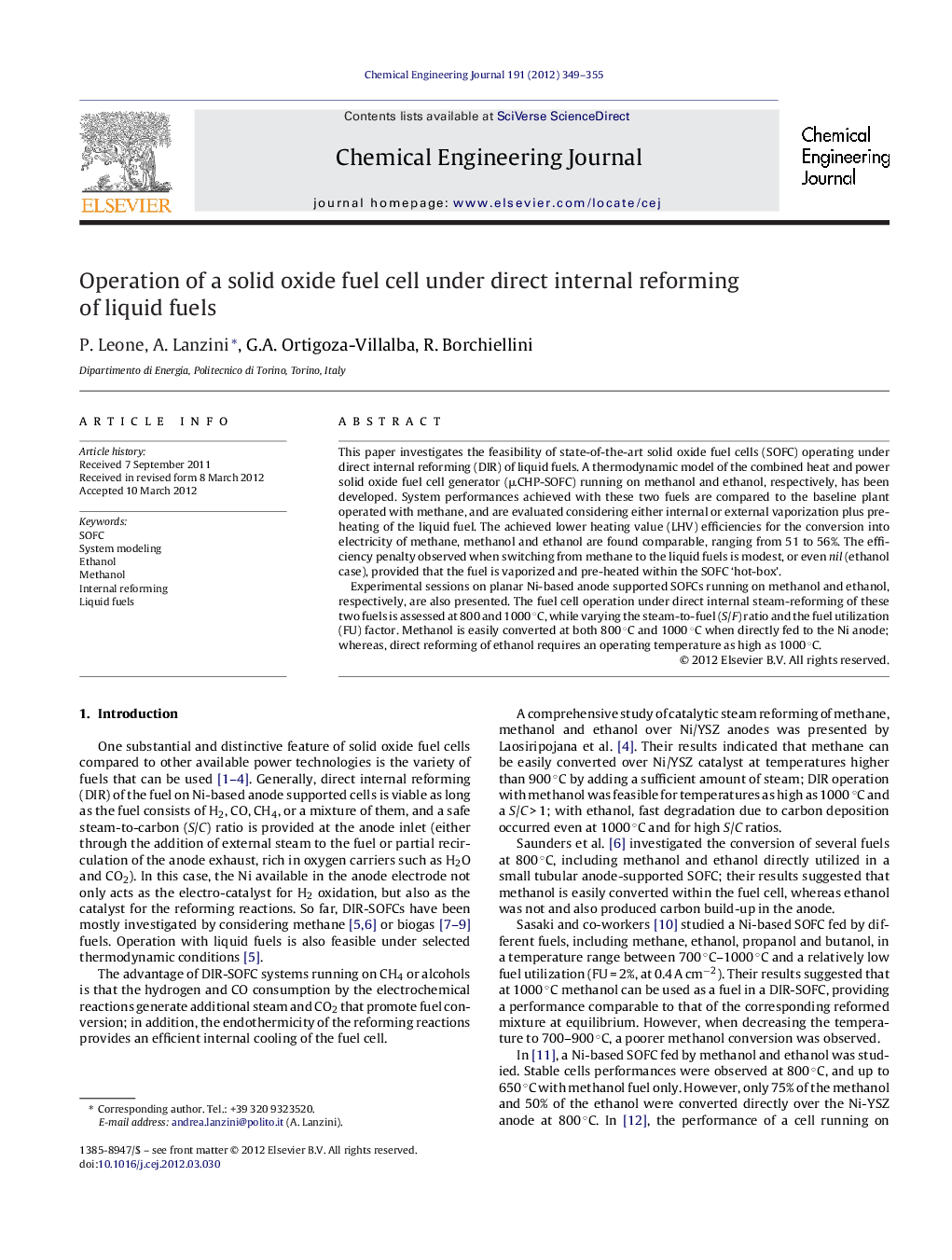| Article ID | Journal | Published Year | Pages | File Type |
|---|---|---|---|---|
| 149919 | Chemical Engineering Journal | 2012 | 7 Pages |
This paper investigates the feasibility of state-of-the-art solid oxide fuel cells (SOFC) operating under direct internal reforming (DIR) of liquid fuels. A thermodynamic model of the combined heat and power solid oxide fuel cell generator (μCHP-SOFC) running on methanol and ethanol, respectively, has been developed. System performances achieved with these two fuels are compared to the baseline plant operated with methane, and are evaluated considering either internal or external vaporization plus pre-heating of the liquid fuel. The achieved lower heating value (LHV) efficiencies for the conversion into electricity of methane, methanol and ethanol are found comparable, ranging from 51 to 56%. The efficiency penalty observed when switching from methane to the liquid fuels is modest, or even nil (ethanol case), provided that the fuel is vaporized and pre-heated within the SOFC ‘hot-box’.Experimental sessions on planar Ni-based anode supported SOFCs running on methanol and ethanol, respectively, are also presented. The fuel cell operation under direct internal steam-reforming of these two fuels is assessed at 800 and 1000 °C, while varying the steam-to-fuel (S/F) ratio and the fuel utilization (FU) factor. Methanol is easily converted at both 800 °C and 1000 °C when directly fed to the Ni anode; whereas, direct reforming of ethanol requires an operating temperature as high as 1000 °C.
► Direct internal reforming (DIR) of methanol and ethanol in a SOFC. ► Effect of the steam-to-fuel ratio on DIR of liquid fuels. ► Multi-fuel energy system analysis of a fuel cell generator.
